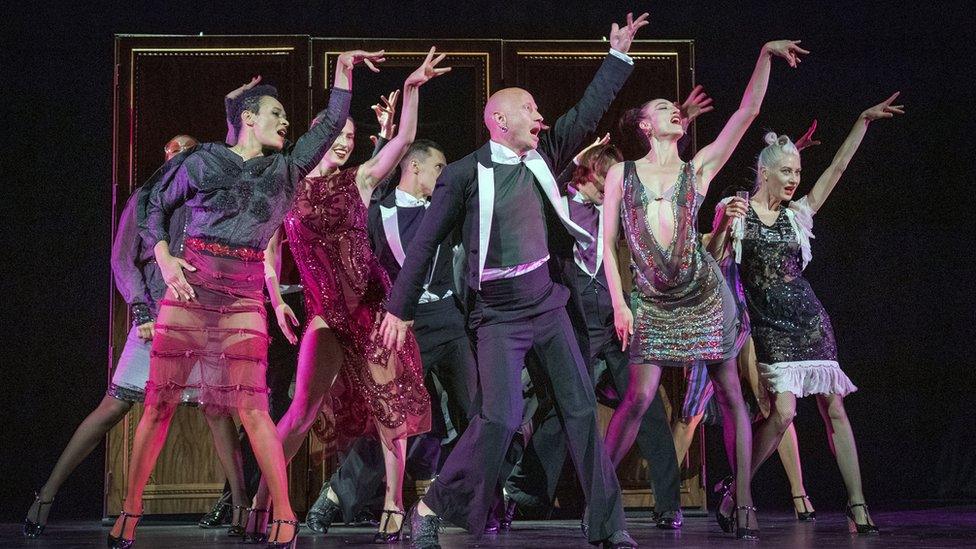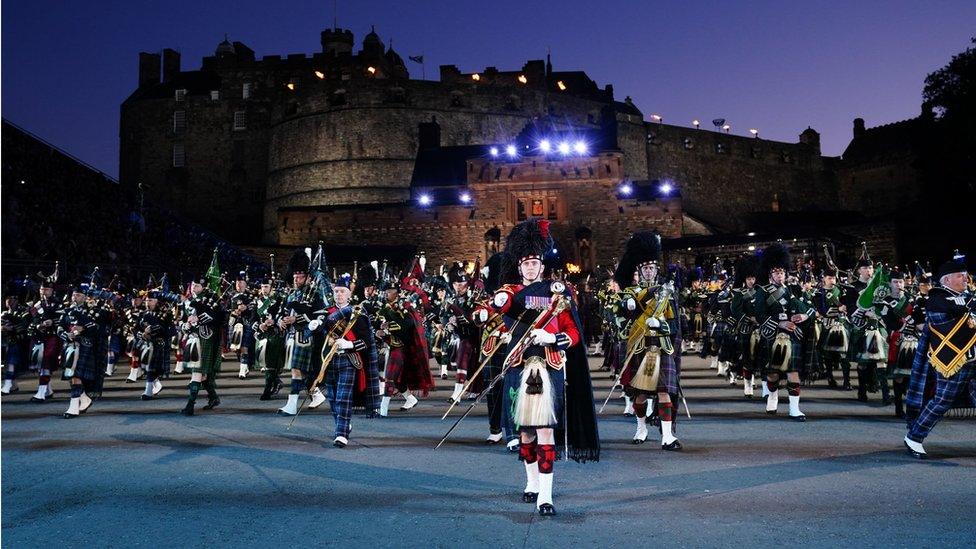Edinburgh festivals: Was the city right to worry about ticket sales?
- Published

The full festival programme returned to the capital for the first time since 2019
It is hard to understand the scale of Edinburgh's festivals unless you are in the thick of them. Or, as happened in 2020, there's nothing to see at all.
In 2020, there were just two shows to choose from at the Edinburgh Fringe, an art installation in St John's church as part of the Just festival, and a socially distanced live art event in Leith which marked South Korea Independence Day.
The Edinburgh International Festival (EIF) was online, as was the book festival. The tattoo, art festival and jazz festival were all abandoned.
Then, in 2021, there was a partial return. Around 10% of the normal volume of international and Fringe festival events, all presented outside, in plush marquees in the case of the EIF and a multi-storey car park in the case of the fringe.
There was understandable worry about the risks involved with the return this year.
Could artists get to Edinburgh, could they afford to stay, what would happen if someone got Covid? What about audiences who had exactly the same concerns?
This year was the first time all six of the city's summer festivals had returned.
Edinburgh International Festival, the Fringe and the film festival all marked their 75th anniversaries, with art, book and jazz festivals and the Tattoo adding to the cultural mix.

Ukraine's Freedom Ballet were among the performers to travel to Edinburgh this year
The figure being touted in the opening days was 80%, for artists returning, for hotel occupancy, for visitor numbers, all compared with 2019.
The city was busy, but not to the levels of three years ago when it felt like the whole infrastructure was creaking at the seams.
The glut of shows on offer was greeted with the sort of careful consideration you might expect of an audience deprived of live entertainment.
The rising cost of living may have played its part in those choices.
Whereas once you might have taken in four or five shows in a day, you might pick one or two, and dip into another festival, or find a free offering, or simply soak up the atmosphere in Edinburgh.
It is easy to forget that Edinburgh is the star of its own show.
The success of each of the six festivals varied according to their ambitions.
The Edinburgh International Book Festival had scaled back its programme and included online content, but the result was a bustling festival with a number of sellout shows.

The tattoo continues to be a popular attraction for festival-goers
The Edinburgh International Festival was down 7% on 2019 but issued more than 150,000 tickets as well as staging several high-profile free events.
Even across the Fringe, venues varied greatly. Tickets sales at the Stand were up, Summerhall, which had scaled back its programme, was down by 7%.
The eight venues who make up edfest.com were predicting a 25% decrease, and blaming accommodation costs for pricing artists out of the fringe.
Others were more sanguine.
TheSpaceUK, which showcased 439 shows across seven venues, is down only 3% on 2019.
Shona McCarthy, CEO of the Fringe Society, is cautiously pleased with the 2.2 million tickets issued around the Fringe.
She said: "These are first steps in recovery. There's still a long way to go, but if you had asked me in December if I thought the Fringe would be back the way it is this summer, I wouldn't have thought it possible.
"The important thing now is for the Fringe to continue to be the best version of itself, not the biggest."
Julia Amour, director of Festivals Edinburgh, agrees.
"It's been a joy to see all six of Edinburgh's summer festivals back, but it's a fragile infrastructure which needs support and it'll take more than the festivals," she said.
"We need to get everyone around the table - city council, government, venues, the fringe society - to work together to do what we can."